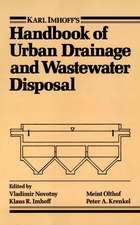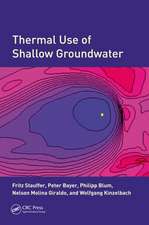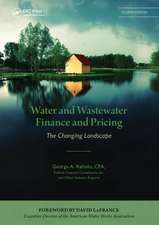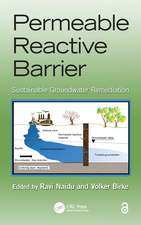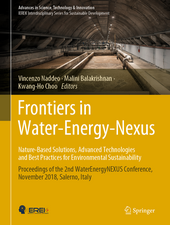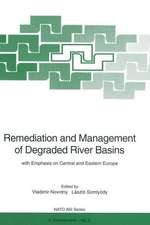Non Point Pollution and Urban Stormwater Management, Volume IX
Autor Vladimir Novotnyen Limba Engleză Hardback – 11 oct 1995
Preț: 409.04 lei
Preț vechi: 520.56 lei
-21% Nou
Puncte Express: 614
Preț estimativ în valută:
78.27€ • 81.94$ • 64.76£
78.27€ • 81.94$ • 64.76£
Carte tipărită la comandă
Livrare economică 05-19 aprilie
Preluare comenzi: 021 569.72.76
Specificații
ISBN-13: 9781566763059
ISBN-10: 1566763053
Pagini: 450
Dimensiuni: 152 x 229 x 34 mm
Greutate: 0.99 kg
Ediția:1
Editura: CRC Press
Colecția CRC Press
ISBN-10: 1566763053
Pagini: 450
Dimensiuni: 152 x 229 x 34 mm
Greutate: 0.99 kg
Ediția:1
Editura: CRC Press
Colecția CRC Press
Public țintă
ProfessionalCuprins
Introduction Basic Concepts Hydrologic Aspects of Nonpoint Pollution: Precipitation-Runoff Relationship - Rainfall Excess Determination-Surface Runoff - Overland Routing of the Precipitation Excess - Impact of Drainage on Watershed Hydrology - Groundwater Systems Erosion and Soil Loss:- Erosion as a Major Nonpoint Pollution Problem - Soil Characteristics - The Erosion Process - Sediment Delivery and Enrichment Processes during Overland Flow - Sediment Transport in Streams - Erosion Control for Pollution Reduction Soil Pollution and Its Mitigation--Impact of Land Use Change on Soil Storage of Pollutants:- Introduction - Time Frame of Pollutant Accumulation and Cleanup - Long-Term Changes - Capacity Controlling Parameters - How to Predict Long-Term Mobility Urban Runoff and Diffuse Pollution: - Accumulation and Washoff - Drainage Impacts - Urban Runoff Pollution Control - Overflow and Its Relation to Capture - Pollution by Combined Sewer Overflows - Control of Pollution by CSOs Modeling of Nonpoint Source Water Quality in Urban and Nonurban Areas: - Modeling Objectives and Considerations - Quality Modeling - Available Urban Modeling Options - Available Nonurban Modeling Concepts - Runoff Quality Simulation Models and Methods - Brief Case Studies Modeling the Impacts of Diffuse Pollution on Receiving Water Quality References Index
Descriere
Directions of diffuse pollution research and Best Management Practices are evolving, and effective and affordable methods of control are being developed to handle the abatement of toxic pollutants from atmospheric deposition, and urban and agricultural runoff


